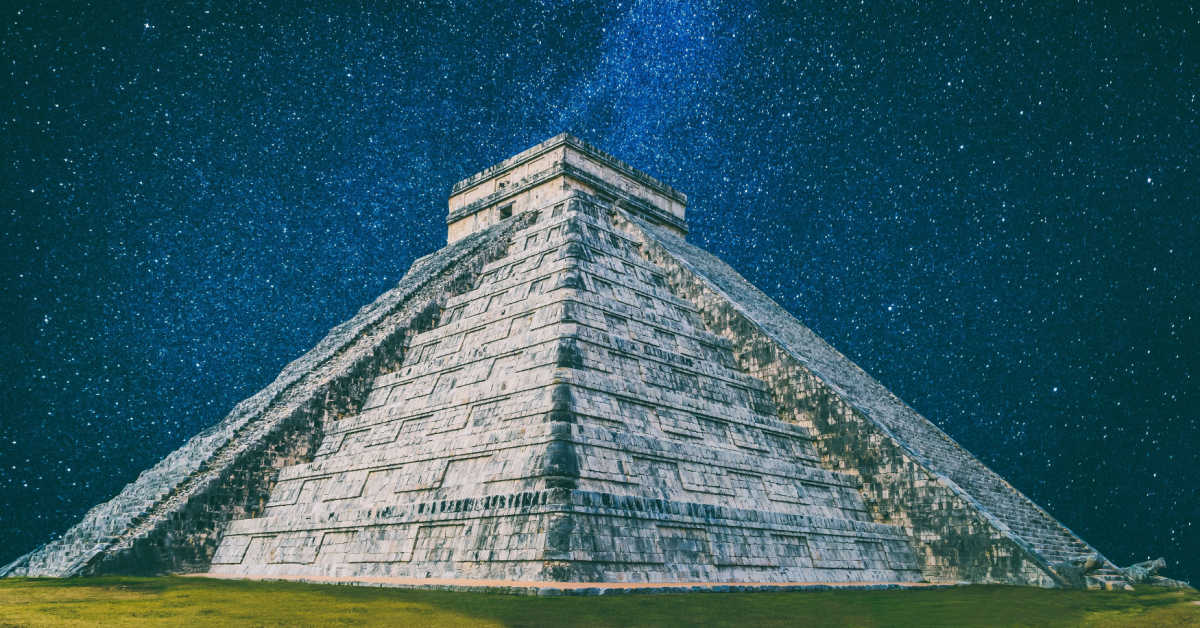Letting the calendar cycle for 45 years gives each planet a chance to complete a synodic cycle
A pair of researchers claim to have deciphered one of the most mysterious of the Mayan calendars, which they believe represents a 45-year cycle of our neighboring planets.
The recently published study of the 819-day Mayan calendar found it linked to synodic periods, which represent the amount of time it takes for another planet to return to the same position in the sky relative to the Earth and Sun. Mercury, for example, has a synodic period of around 116 days; Mars's is a much longer 780.
Prior research, the pair wrote, tried to show planetary connections to the 819-day calendar, which is divided into four color-directional parts. However, they note that "its four-part, color-directional scheme is too short to fit well with the synodic periods of the visible planets."
Before this latest paper, it appears researchers simply didn't think in broad enough terms because some extrapolation and repetition appears to have been the solution staring everyone in the face from the start.
"By increasing the calendar length to 20 periods of 819-days a pattern emerges in which the synodic periods of all the visible planets commensurate with station points in the larger 819-day calendar," the researchers wrote.
The math appears to bear that out. NASA reckons Mercury's synodic period is 115.88 days, but if we allow the ancient Mayans some leniency due to their lack of advanced scientific instruments and say it's 117 days, you can get exactly seven periods on the calendar.
The other planets visible from Earth and known to the Mayans – Venus, Mars, Jupiter and Saturn – all have similar mathematical matches when the calendar is allowed to make multiple cycles. Mars, which has the longest synodic period at 780 days, takes 21 periods to fit exactly into 20 cycles, both of which have 16,380 days, just shy of 45 years.
"The Maya astronomers who created the 819-day count envisioned it as a larger calendar system that could be used for predictions of all the visible planet's synod periods, as well as commensuration points with their cycles in the Tzolk'in and Calendar Round," the researchers wrote.
The Tzolk'in calendar is the Mayan 260-day calendar most people are familiar with, while the Calendar Round is a combination of the 260-day calendar and another calendar known as the Haab, which more closely corresponds to our modern 365-day conception.
Interestingly enough, the 819-day calendar also matches the Tzolk'in when multiple occurrences are allowed: the 20-cycle, 16,380-day repetition of the synodic calendar matches with 63 cycles of the Tzolk'in so it all fits, mathematically speaking.
We asked the paper's authors to comment, but didn't immediately receive a response. Without the chance to ask some questions, its worth maintaining a cautious approach to interpretations of any Mayan calendars.
Much fuss was made over numerological interpretations of the Mayan calendar that led to eschatologists predicting a world-ending cataclysm in 2012, which clearly didn't happen. As is often the case when world-ending events fail to occur, the date was shifted to 2017. The Register would like to point out that we survived that apocalypse too.
Two failures does not a strike out make so Mayan calendar "experts" said the world would instead end in 2020. While things definitely got weird a few years ago and have yet to return to a sense of normalcy, we again note that we're still here.




Recommended Comments
There are no comments to display.
Join the conversation
You can post now and register later. If you have an account, sign in now to post with your account.
Note: Your post will require moderator approval before it will be visible.